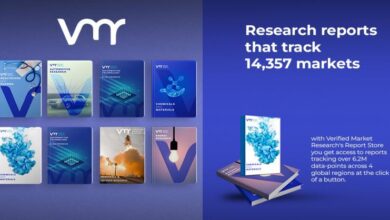Scott Dylan’s Predictive Analytics in Food Service: A Game Changer

Today, we all want things quick and tailored to our tastes. Scott Dylan co-founder of Inc & Co, shows how predictive analytics in food service is changing how we eat. It’s not just about making things faster. It’s about understanding our choices and how they shape the food industry.
As technology blends with our meals, it’s more than convenience. It’s a change in how we view eating. Every meal becomes a reflection of how tech can enhance our daily lives.
Revolutionising Food Delivery with AI Technology
AI technology is changing food delivery in major ways, offering innovations and sustainability. Scott Dylan talks about AI making a big difference in food delivery, improving customer service and efficiency. With AI, routing is better, costs are down, and there’s less impact on the environment. This not only increases profits but also helps the planet by cutting the carbon footprint of deliveries.
Online food providers are responding to more people shopping online, using AI to meet this demand. AI helps plan delivery routes efficiently, making services faster and more reliable. This technology leads to less travel time and emissions, showing a commitment to sustainability.
Fast food is also getting into AI. For example, McDonald’s bought Dynamic Yield to better serve drive-thru customers. Domino’s Pizza and Starbucks have added AI features too, like checking pizza quality and predicting stock needs. KFC and Taco Bell use AI to make customer service more personal and improve sales.
Restaurants are starting to use robots and AI to be more efficient. McDonald’s uses touch-screen kiosks and AI menus, making ordering easier. Autonomous bots and AI helpers, like those at Wingstop, show a future with tech-savvy customer service.
AI in catering and food delivery is already here, changing everything from ordering to delivery. According to Scott Dylan, using AI and analytics means a better, greener future for food services.
Predictive Analytics in Food Service: Tailoring the Culinary Journey
The use of predictive analytics in food service marks a big step towards custom dining experiences. McDonald’s has benefited from this by adding touch-screen kiosks for easier ordering. They also bought Dynamic Yield in 2019 to improve personalisation and decision-making tech. These actions show a big move towards making each customer’s experience unique.
Domino’s in Australia and New Zealand uses an AI pizza checker, DOM, showing the trend of using food data analysis for quality. Starbucks started their Deep Brew program to better predict stock needs and be more efficient. These companies are not just guessing but actually shaping dining preferences. They offer meals that fit each person’s diet.
AI is changing more than just how accurate orders are or how stock is managed. It’s leading to smarter services like voice recognition at drive-thrus. A 2021 Journal of Food Quality study talks about AI’s growing role in better food and farming.
Research in the Annual Review of Food Science and Technology and the Journal of Clean Production shows AI might improve food safety and make food systems more sustainable. A 2023 Journal of Food Engineering article talks about moving to digital methods. This could really change the industry.
Social media’s influence is also big. Influencer marketing affects what young people want to eat, says the Journal of Agricultural Sciences. Food services must think about this in their predictions.
Looking ahead, advice on using AI in Food Engineering Reviews and data from various studies suggest a shift to data-led, custom customer experiences. Predictive analytics in food service is making dining better by focusing on health and sustainability.
Advancements in Smart Restaurant Technology
The food industry is changing fast because of smart restaurant technology. Now, we’re moving towards more digital services. Data from Mintel shows that over 40% of customers stick with Quick Service Restaurants (QSR) mainly for their great customer service. This highlights how important technology is in making guest interactions better. Here, AI-driven personalised service is key to keeping customers loyal.
In May 2019, Domino’s in Australia and New Zealand started using the DOM Pizza Checker. This digital food retail leap uses AI. It checks predictive modelling for the food industry to ensure pizzas are perfect before delivery. This means customers are always happy with what they get.
Also, Chick-fil-A made a big step in May 2019. They began using artificial intelligence and machine learning to check social media for food safety chats. This shows how the whole industry is starting to use smart restaurant technology. Using AI helps keep brands safe and shows they care about consumer worries right away.
Research into AI, Big Data, and IoT is offering new views on how to change agriculture and food. Experts like Akoka J. and others are trying to figure out how tech can help with food safety laws, supply chain, and quality. The research from people like Schroeder R. and many more shows that tech will help handle the hard parts of modern food safety and quality.
To sum up, the food industry’s future depends on using advanced tech for better online and offline experiences. This will make services more efficient and improve how customers see food places. We’re looking at a strong, tech-smart food industry future.
Data-Driven Decision-Making in Hospitality Industry
In the lively world of hospitality, data-driven decision-making is key. It helps restaurants succeed based on solid facts, not just gut feelings. Online retail dynamics also change thanks to deep looks at sales and what customers like. This shapes strategies that boost both profits and customer loyalty.
Menu planning and staffing get better with data, cutting waste and unused resources. This boosts how efficiently places run. By using data, restaurants offer diners what they like more accurately. Happy customers are likely to come back, helping the restaurant’s fame and future.
New tech in kitchens lets restaurants keep an eye on sale trends, get customer feedback, manage stock, and use predictive analytics. These tools help give diners great meals and experiences, reaching cooking greatness.
Predictive analytics is changing fast in hospitality. It looks at big data sets to guess future trends, customer actions, and what the market wants. This leads to strong business plans. Data, especially from online bookings and reviews, supports custom services and pricing. Tools like Micros Opera help hotels predict accurately and manage money well.
Beyond hotels, predictive analytics helps airlines, car rental firms, and cruise lines. They all have a lot of data that can be analysed. Predictive tools find patterns to predict the future. They also make sure payments are safe and personal for customers, crucial in today’s digital hospitality world.
The jump in data access, thanks to cloud tech, has made data mining and analysis more detailed. Overall, data-driven and predictive analysis make the hospitality industry better. They’re leading a big change that’s key for staying current and lasting in a constantly evolving market.
Scott Dylan’s Vision on Sustainable Practices in Food Service
Scott Dylan has a bold idea for the food service industry. It revolves around sustainable practices in food delivery. He notes that many people live without access to clean cooking. This situation goes hand in hand with energy issues. Dylan believes in eco-friendly food service to improve social equity and help the environment.
He says that the rich have benefited most from economic growth. Dylan wants this to change. He aims for green retail trends to help more people. The goal is to look after today and the future, following the 1987 Brundtland Commission report. Dylan dreams of Sustainable Abundance. In this future, food service tech and sustainability efforts merge.
The International Energy Agency (IEA) outlines goals to give clean cooking technologies to many. Dylan urges businesses to lead, promoting eco-friendly food service. He sees a time when sustainable practices in food delivery bridge inequality. And they meet growing customer demands for green practices in the UK and elsewhere.
Transforming Consumer Behaviour Through Convenience
Scott Dylan’s research shows a growing trend towards health and wellness in the UK. About 60% of people worldwide are now focusing more on health. This has changed what consumers want. Predictive technology is melding with these desires. It’s creating new chances for brands in convenient food retail.
The COVID-19 pandemic made 76% of global consumers choose healthier eating and drinking habits. This care for wellbeing extends to physical activity, with 41% wanting to be more active next year. Also, almost two-thirds are interested in foods and drinks made just for them. This shows the need for retail models that use predictive technology to predict preferences.
Online grocery shopping is becoming more popular because of these health trends. In the UK, people are searching more for global flavours, with an 18% rise in searches for recommended cuisines. Diets from Norway and Denmark, known for their health benefits, are getting more attention. This shows a wider interest in wellness-focused international cuisines.
Also, there’s more interest in advanced cooking tools like air fryers and instant pots. They’ve become more popular over five years. This shows people want to cook in healthier ways without losing convenience. This reflects how consumer behaviour is changing towards easier but nutritious meal prep.
The UK’s growing interest in food preservation, like pickling vegetables, shows a deeper value for food quality and longevity. Searches for plant-based ingredients like algae and tempeh are increasing. This indicates a shift towards plant-based diets. Brands can use this shift to offer a wider variety of products.
Since COVID-19 started, 65% of consumers are paying more attention to immunity. Also, 56% are turning to comfort food for self-care. Convenient food retail that uses insights into consumer behaviour can meet these new needs well. They combine well-being with ease and comfort.
Online grocery shopping platforms, using predictive technology, are leading the change in consumer behaviour, especially in the UK. The country is known for embracing tech and innovative health solutions. The blend of technology, health trends, and personalized diets is key to the future of convenient food retail.
Navigating the Choppy Waters of Market Transformation
The food service industry evolution is moving through big changes. This is driven by more focus on sustainability and tech advances. Companies like Aldi are leading with sustainable packaging and using more local produce. These steps meet consumer wants and shift the market dynamics towards valuing the environment as much as profits.
Scott Dylan sees how predictive analytics is changing the game. This reflects the changes in the global shipping industry, where tech plays a big role. For example, the Internet of Things (IoT) is creating ‘smart kitchens’ and improving food distribution, similar to ‘smart shipping’ which has changed shipping logistics.
Predictive analytics and IoT are showing their worth in the food industry too. They’re making delivery routes better, reducing energy use, and enhancing supply chain management. This supports a move towards being more green and efficient in how we work.
Yet, as we depend more on data, we face challenges like data security and the need for skilled analysis. Scott Dylan knows overcoming these issues is key to keeping customer trust and meeting regulations. With hard work and new ideas, the food service sector can navigate these waters. It aims to be a leader in combining data-driven decisions with a commitment to the environment.
A Glimpse into Food Retail’s Progressive Future
After the pandemic, it’s clear that food system sustainability is essential. The disruption of food supply chains, like China’s pork crisis, has shown us the need for better food security. It highlights how digital technology in food retail must play a part in creating a more efficient and resilient future.
To update food retail, we must focus on sustainability when predicting future food trends. The drop in China’s pork due to African swine fever shows the importance of this. Therefore, using data and tech to foresee trends and prevent risks is key for the industry’s growth and survival.
China’s struggles with food safety and the issues in small farms offer lessons for UK food retail. The growth of food delivery services, with an 18% increase and a boom in mobile app orders, shows a push for innovation. This drive also includes efforts to lessen environmental harm, linking sustainability with digital growth in food retail.
Digital technology in food retail has been embraced by UK platforms like Just Eat, Deliveroo, and UberEats. They’ve adapted by expanding their services, like delivering coffee and fast food. Projects like Deliveroo’s “opt-in” cutlery show how these platforms can promote sustainable habits among consumers.
Looking forward, the digital aspect of food retail will only get bigger. With digital tech’s role growing, businesses must innovate and take up sustainable practices. The partnership between digital technology and sustainability offers a hopeful plan for a thriving, efficient future in food retail.
Integration of Digitalisation and Traditional Food Service
The digital world is changing how we enjoy food. It’s blending the best of technology with the comfort of traditional eating. This mixture is setting new standards in the food industry. Thanks to new tech, we’re seeing a perfect mix of modern ease and classic dining charm.
Recent studies have looked into how food and farming are using tech like the Internet of Things and artificial intelligence. This tech, along with big data, is making food safer and processes smoother from the farm to our tables. Zhou, Zhang, and Wang (2021) have shown that using AI and blockchain is making food service safer and more efficient.
Famous food brands are joining the digital age too. McDonald’s bought an AI company named Apprente to make drive-thrus quicker using voice tech. Domino’s has an AI helper named Dom for better online ordering. Starbucks uses customer data through Deep Brew to give personalised suggestions, making customers feel special and encouraging loyalty.
AI is also making things better behind the scenes. Dishoom has cut down on food waste, showing tech’s role in being green. Smart packaging, researched by Janjarasskul and Suppakul (2018), is about keeping food quality high and making sure it’s safe, earning customer trust.
Tech is also making farming more sustainable. Dayıoğlu and Turker (2021) look at how digital changes are improving farming, blending traditional methods with advanced tech. This is part of a bigger move towards a technologically savvy food industry.
The food world is excited about using VR/AR technology for new eating experiences. This mix of old and new ways of dining is leading to a renaissance in food service. The message is clear: using technology can enhance our traditional dining experiences in amazing ways.
The Impact of Predictive Analytics on the Culinary Experience
Predictive analytics is changing the food service industry fast. It creates better dining experiences by understanding data. This means diners get meals that suit their tastes. Restaurants use this data to manage their stock and adapt to what customers want.
AI and predictive ordering are changing how we get our food. These systems learn from our habits to make deliveries quicker and meal prep smoother. This way, we get our food fast and hot, just when we want it.
Self-service stations with RFID tech show how technology is shaping food service. Businesses use this tech to make more money and work better. Also, mobile ordering has become a real option now. It lets customers choose how and when they pay for their meals.
Data analytics helps make the supply chain transparent, building customer trust. Big names like McDonald’s have seen huge sales growth from digital strategies. They serve over 70 million people and have seen a big rise in sales through digital means.
Quick Service Restaurants have seen a big jump in digital sales too. Techs like Automated Order Taking and data platforms help them understand what customers want. This leads to better service and new items on the menu.
Tools like Power BI and Tableau show data in easy ways. They help restaurants make quick, smart decisions. Thanks to data analytics, the food industry keeps growing. It helps in many areas, like marketing and managing stock.
Predictive analytics is making dining very personal. AI in food delivery makes getting our meals convenient. It’s leading a big change in how we think about eating out.
Scott Dylan’s insights show the food service industry as ready for innovation. Predictive analytics is changing the game. AI and predictive modelling make dining highly customisable, meeting every consumer’s needs precisely.
This shift towards a demand-driven model enhances dining experiences. It also highlights the role of sustainable practices in the industry.
Research like the “Importance of Regional and Traditional EU Quality Schemes in Young Consumer Food Purchasing Decisions” reveals consumers value authenticity and quality. Big data and IoT are set to improve food safety and supply chain management. Trust in food safety, helped by clear social media communication, is key to keeping customers happy and coming back.
Scott Dylan promotes smarter, customer-focused food services that care for the environment. Integrating new technologies can exceed consumer expectations. This will change food service innovation for years to come.



